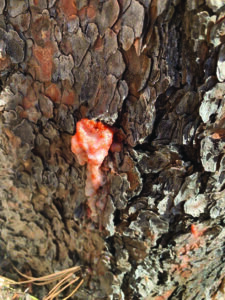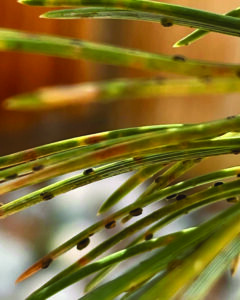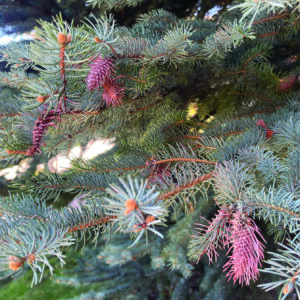Preservation Tree Care, owned by Evergreen locals Matt and Adena Shepayo, has over 100 years of combined experience in removals, fire mitigation, planting, structural pruning and plant health care. Their company is invested in the health and beauty of your trees, maximizing your home value and making sure your property is safe. They pride themselves on their company culture, quality of work and long-term relationships with their clients and employees. After 19 years of successfully running a tree care company in the Denver metro area, they know it’s all about integrity and relationships.
“You know when we service your property, we are providing the service we are all proud of. If we don’t know the answer, we will find it for you,” says Matt. They invest in educating their employees and the public on tree care, safety and fire mitigation. Everything they do is science-based: from structural pruning to withstand wind and snow, to protecting your trees from pests and disease. Their goal is preserving your trees’ health and well-being for the life of the tree. Trees can increase property values up to 19 percent and provide beauty and health benefits to people and the environment.
Of course, fire mitigation is a big focus of their business as Adena was a firefighter with the California Department of Forestry and Fire Protection (Cal Fire). Fire mitigation protects you, those you love, your home, community and our firefighters. They implore homeowners to be fire ready to take the steps that give firefighters the best shot at saving your property and keeping them safe.
After years of research and experience, they now have a sustainable method of caring for our community’s trees and properties. They recommend contacting them for a free consultation for all your tree care, fire mitigation and pest and disease needs. They look forward to being of service to you and our mountain community. And now for ISA Certified Arborist Matt Shepayo’s educational piece on some local pests affecting our area.
Aphids, Moths and Mites, Oh My! What to Do to Protect Your Trees This Spring
Tree and plant health is particularly important to address now, and we are here to help! As spring ramps up and temperatures continue to rise, the pests that can harm your trees are beginning to awaken. It’s time to plan to protect the investment in your property. Here’s how:
Take an inventory of the plants and their condition on site – this includes trees, shrubs annuals and perennials. See what plants you have and what their general health is. (Hint— if you don’t know, ask a certified arborist!)
Know the potential threats – know what pests are in your area and what plants they like to feed on. Here’s a list of common pests that will impact plants in Evergreen and the surrounding areas.
Know the proper product and timing of the application for best results.
Aphids: These pear-shaped, cuddly creatures love to feed on aspens and conifers alike. An easy symptom to diagnose, these pests leave the shiny and sticky honeydew on the leaf surface as well as your cars or outdoor living space underneath them. Aphids can be treated systemically or through sprays. They’re weak creatures and even organic soap spray will help minimize their impact. We see them throughout the entire summer and they can be treated at any time.

Photo by Whitney Cranshaw, CSU

Photo by Whitney Cranshaw, CSU
Mites: I mostly see these in pine trees where they poke the needles to allow sap to leak out and feed on the chlorophyll within. The symptoms you will see are yellowing of the needles and potentially webs in the branches where they are feeding. Organic soap sprays work well here, otherwise you need specific miticides, which can be rather toxic. Acephate can be used systemically in deciduous trees as well.

Photo by Whitney Cranshaw, CSU
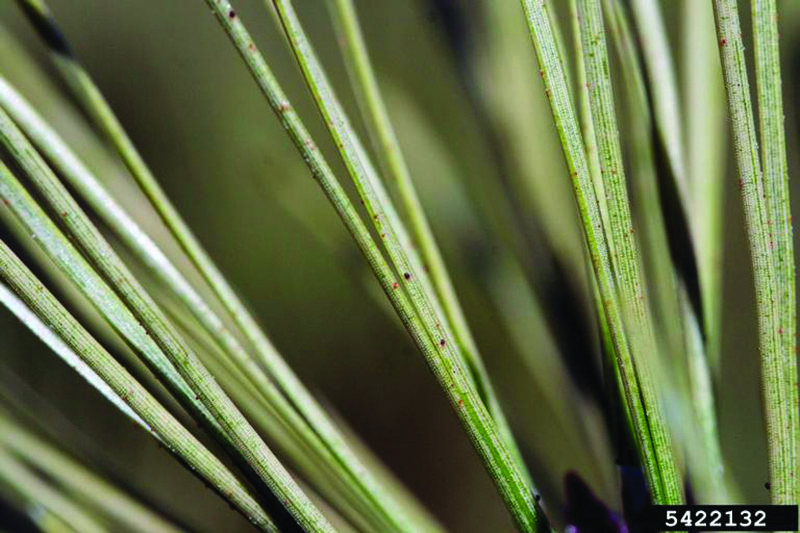
Photo by Whitney Cransaw, CSU
Spruce budworm and Douglas fir tussock moth: I group these together because they are so similar. They are specific to both blue spruce and Douglas fir and are destructive in their caterpillar form. You can literally hear these pests chewing on your trees if you listen closely. Organic spray with Spinosad, or non organic spray of pyrethroids work well, but timing is critical. You must spray when these first emerge (early to mid-June) or you’ll have little left of your canopy after they’ve had their fill. Repeated attacks will kill trees.
Douglas fir beetle: This is the most destructive bark beetle of mature Douglas fir forests in the western United States. Detection is tricky and you will likely see dead trees as your first sign. Other signs include pitch or resin seeping from the bark and/or frass (saw dust) at the base of the tree. Like mountain pine beetle, these pests cut off the vascular system to the tree, and the entire canopy will turn red and die. Two pyrethroid sprays per year (April and July) will have the best efficacy in preventing the adults from attacking new trees.
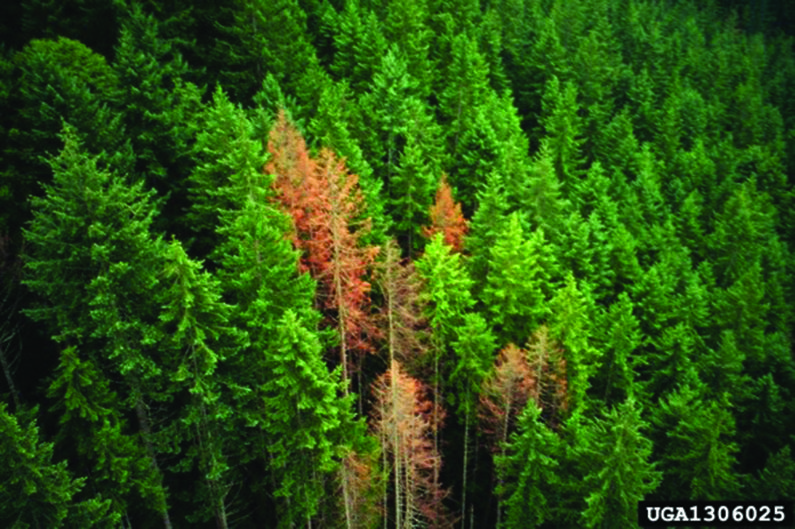
Photo by Whitney Cranshae, CSU
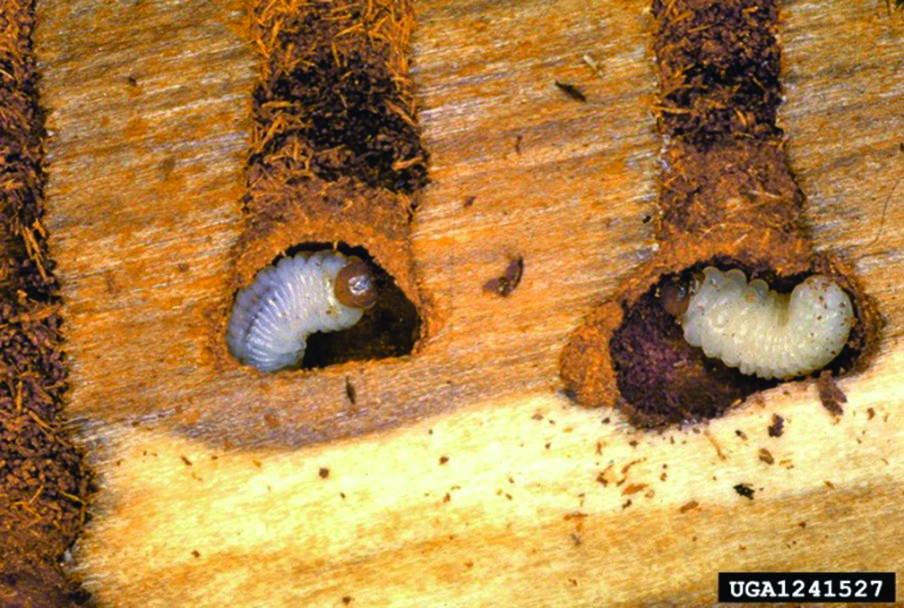
Photo by Malcolm Furniss
Mountain pine beetle: Many of us who have been in Colorado since the early 2000s may remember the severe outbreak along the I-70 Corridor which devastated the ponderosa and lodgepole pine forest throughout the area. They can also attack Scotch and limber pines and less often bristlecone pines. The telltale signs of infestation are “popcorn-like” sap pushing out of the bark on the lower 20 feet of the trunk and the entire canopy turning red seemingly overnight. Mountain pine beetle flies in July so you need to have trees sprayed no later than the 4th of July to ensure protection against this destructive insect.
Scale, various: There are specific scale insects for just about every coniferous tree in our area. Symptoms appear as white flecks on the needles leading to yellowing or browning and premature needle drop. Untreated infestation may lead to the death of the twig, branches and eventually the entire tree. Dormant oils work great and are an organic way to combat these pests. Apply in spring and fall when temperatures are below 50 degrees. If trying to stop them during the season, you’ll have to look at the specific scale you’re looking to treat and time the spray appropriately. As dormant oils are so very effective, I would stick with those unless you’re in a critical situation.
Cooley spruce gall: Common and conspicuous on spruce trees, these insects create pineapple looking galls on the tips of the branches. Though an aesthetic eye sore, they cause little to no harm to the tree. You can spray pyrethroids to improve the appearance of the trees in the spring before June when the new growth starts or in the fall after the females have settled on the tree (Oct/Nov). You can use dormant oil sprays over the winter, but beware as they will discolor the trees by removing the blue paragon that gives spruce trees their namesake color. Cooley spruce gall use Douglas fir to complete their life cycle, so minimize planting those two trees together if you detest this pest.
Preservation Tree Care Inc. is your locally owned, nationally accredited tree care company. PTC handles residential, commercial, municipal and state contracts and provides pruning, planting, removal, plant health care and fire mitigation services using the most cutting edge and environmentally responsible techniques. Their incredible team of certified professionals is standing by to serve you and your property’s needs. Visit PreservationTreeCare.net for a complete list of services, or call 303.761.1088




